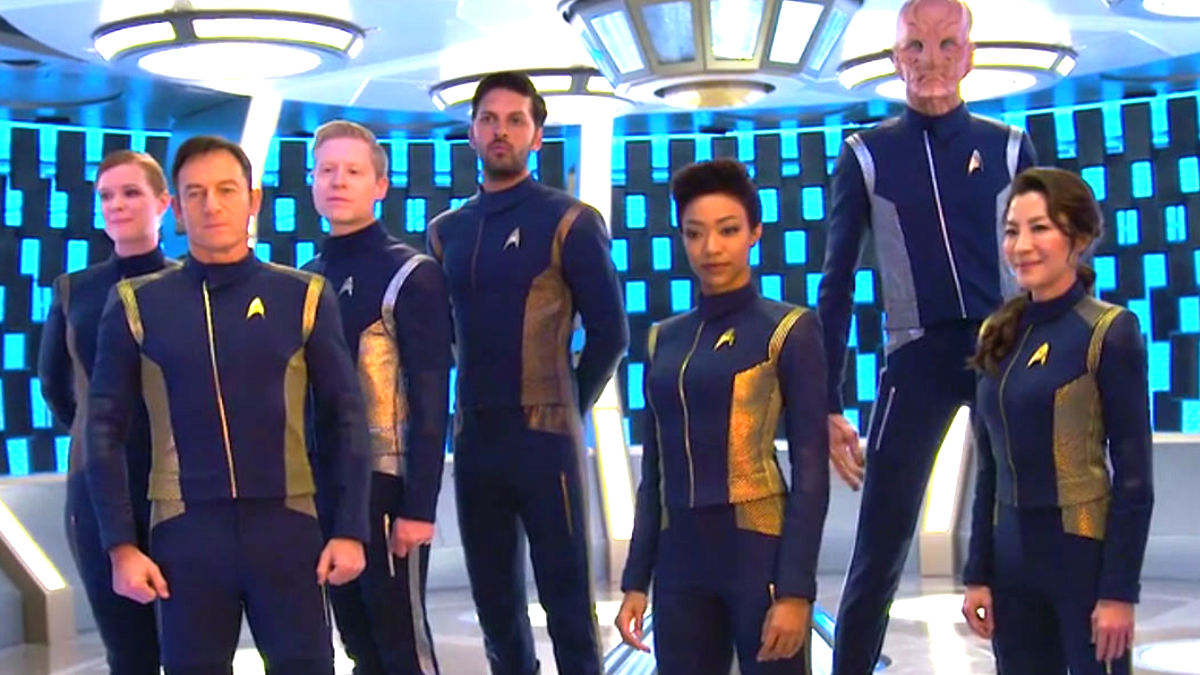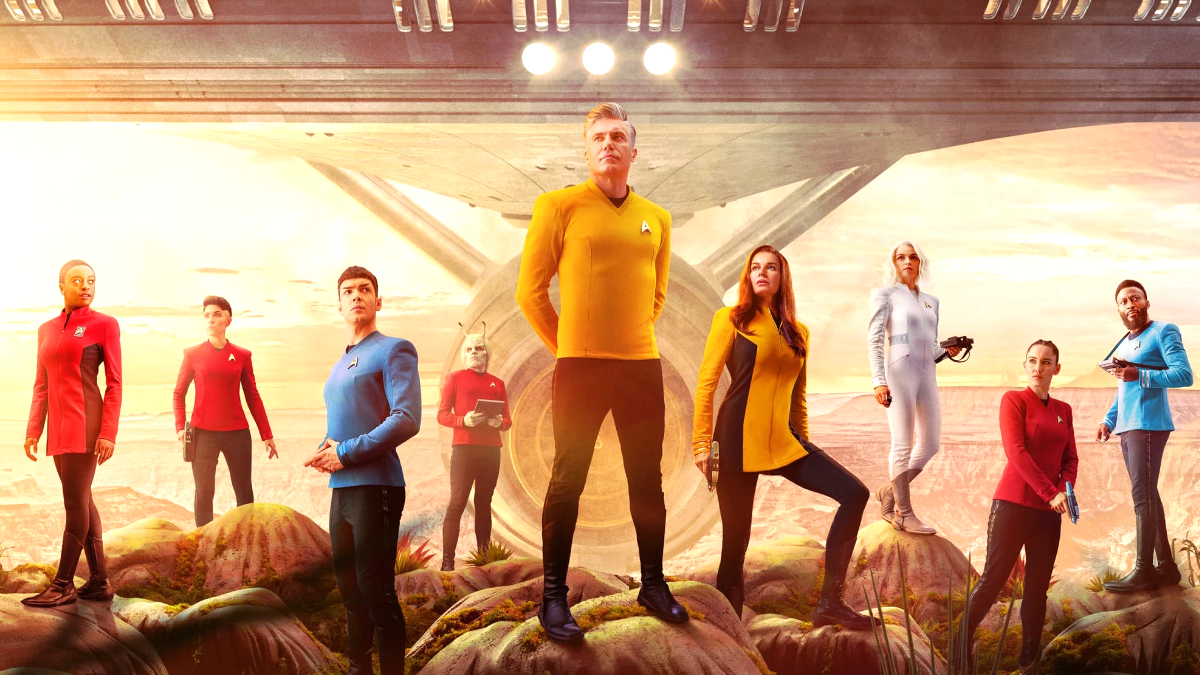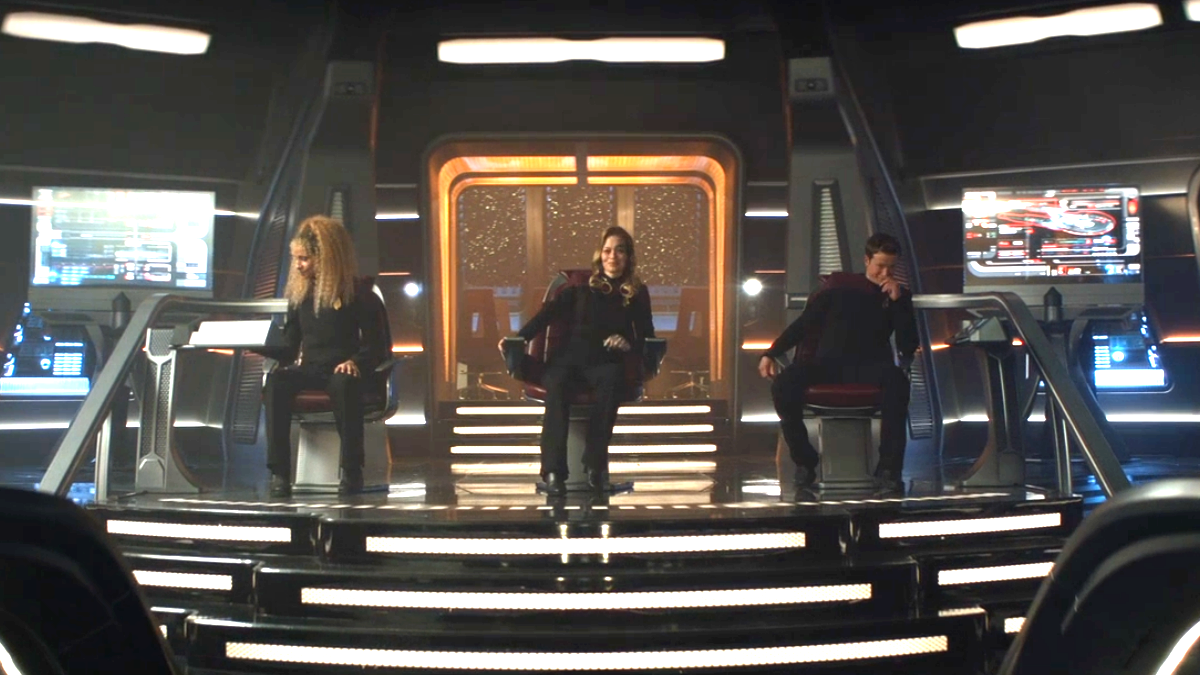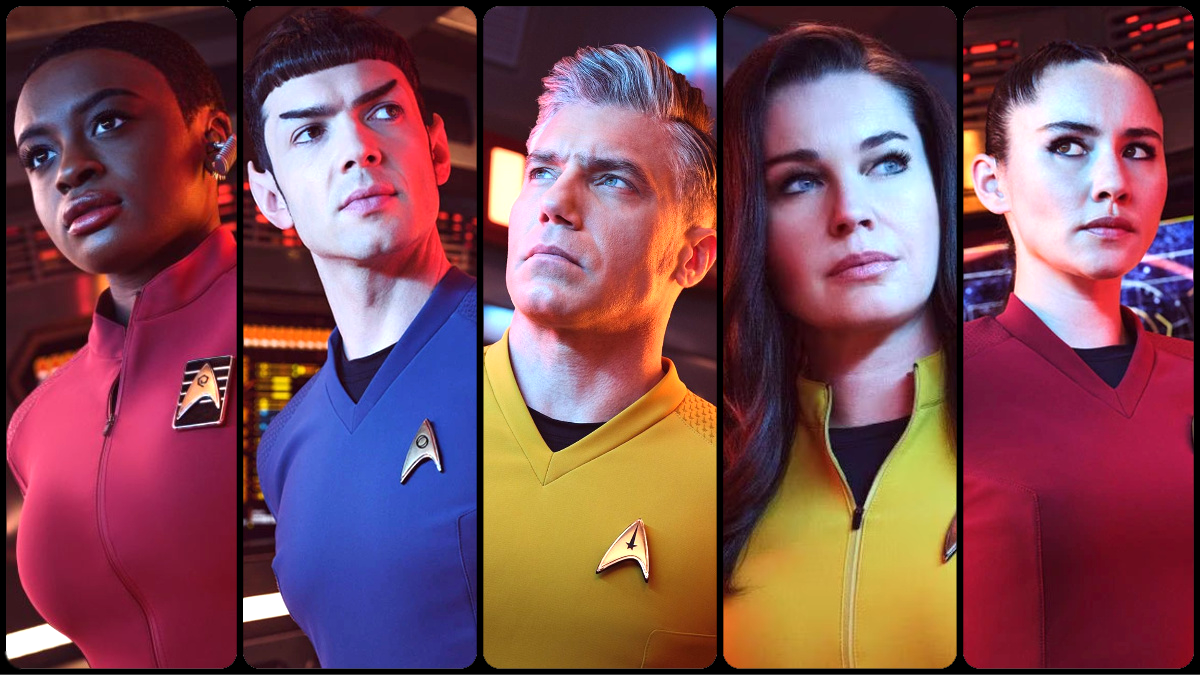Modern Star Trek shows are taking streaming services by storm and inspiring new generations of fans. For a few years now, the franchise has been changing up the classic Trek formula and trying new things — sometimes with great success, sometimes resulting in disaster. Now it’s time for showrunners to double down on really bringing classic Star Trek back.
The classic episodic style
Episodic television largely seemed to fade out after the 2000s. Memories of dreaded “filler episodes” from long-running 1990s series put people off the idea of having a new short story every week. Shows like The Sopranos and Deadwood, which offered complicated, evolving stories spanning multiple hours, became the norm. These series were seen as more prestigious and mature than the “story-of-the-week” shows of decades past, which started to develop a reputation for being immature.
Star Trek was one of the foremost examples of that type of show. The franchise dominated the television world in the 1990s with three different long-running series. Even at the time, audiences sometimes mocked the perceived lack of continuity, and the way that major events would occur and then go unmentioned, with characters seemingly rebounding from traumatic experiences in the space of a week.
But for nearly 40 years, Star Trek thrived on that episodic, “planet of the week” model. From The Original Series through to The Next Generation, Voyager, and most of Deep Space Nine and Enterprise, the franchise became renowned for its ability to offer tightly-written, thoughtful stories on a different topic or idea each week, taking viewers on varied adventures covering a whole range of moods and styles.
During this era, some of the series toyed with serialization – Deep Space Nine‘s Dominion War arc advanced throughout the show’s latter half, while Enterprise‘s Xindi arc offered a similar foray into a season-long story. Both shows did, however, still produce plenty of standalone episodes within those arcs, fitting cleanly into the classic Star Trek mold even as they explored new territory.
The return of Star Trek

Star Trek entered a wilderness after Enterprise ended in 2005. J.J. Abrams produced a film series starting in 2009, but the franchise’s future in television looked doubtful. This all changed in 2017, when Star Trek: Discovery hit streaming services. Discovery was a different type of Star Trek, focused less on genre-spanning space adventures and more on a complex tale of war and political intrigue that unfolded bit by bit over 15 episodes. While many fans appreciated the fresh new direction, others felt that the show had strayed far from what made Star Trek so popular to start with, in both structure and tone. Discovery‘s second season came to lean into a DS9-style episodic model, with a season-long plot that was comprised mainly of standalone episodes.
Star Trek: Picard came next, and carried on Discovery‘s initial attempts at serialization. The results were similarly mixed, and the second season especially seemed to struggle under the serialized model, with competing plots simultaneously moving at a glacial and breakneck pace to create something that felt at times more like a psychedelic dream than a science fiction story. The wild cuts between these plots — with characters occasionally seeming to travel great distances in mere seconds as the script demanded — gave the season an odd feeling of having no sense of space or time, and the writers actively struggled to figure out how to fill out the entire ten episodes. Nevertheless, both Discovery and Picard did rally in later seasons, and skilfully demonstrated how a serialized Star Trek is possible.
However, the announcement of Strange New Worlds heralded a return to classic Star Trek storytelling. The show came about largely because of ecstatic fan reaction to the appearance of the characters of Pike, Spock and Number One in Discovery‘s second season. Trekkies had gotten a new taste of classic Star Trek, and they wanted more. The word “episodic” was very deliberately used in the show’s pre-release marketing. The series clearly and proudly billed itself as the successor to the type of Star Trek that hadn’t been seen since the early 2000s, seeing the Enterprise take on another voyage through space full of variety and adventure with a new issue to tackle each week.
The advantages of episodic television

Free from the weight of lengthy, complicated plots that Discovery and Picard bore, Strange New Worlds gleefully embraces the full possibilities offered by episodic storytelling. The second season has dabbled in all kinds of different genres, from situation comedy to action-adventure to psychological thriller and even a partly-animated crossover episode with Lower Decks. And, of course, a musical episode – because why not? What better way to celebrate the freedom of episodic storytelling than to take viewers on a breakneck trip through every possible genre, offering a totally different experience each week?
Strange New Worlds proves that episodic writing doesn’t mean you can’t have rich character arcs and ongoing subplots. In fact, Star Trek has always had some form of continuity. Even in The Original Series, past events are on occasion alluded to — Starfleet’s encounter with the Organians in “Errand of Mercy” forms the basis for the Organian Treaty that is referred to later, for example — but the 90s shows had a fairly clear sense of continuity. The Next Generation developed various subplots throughout its run, from Worf’s parenting dilemmas to Picard’s violent assimilation by the Borg and subsequent battle with PTSD. Deep Space Nine took it further, with an unfolding plot that required viewers to tune in each week or risk becoming lost.
Voyager is often criticized for a lack of continuity and a reliance on “reset button” writing, but that’s not fair. Characters have clearly defined arcs – like Seven of Nine, whose recovery from years spent as a Borg drone is wonderfully portrayed – and relationships develop and dissolve between the crew. Unlike in previous Star Trek shows, the USS Voyager even travels through different regions of space (though these tend to make as little sense as the layout of space usually does in Star Trek). There are even entire sequel episodes, like “Course: Oblivion” offering a shocking twist on the previous seasons’ “Demon,” and some episodes like “The Voyager Conspiracy” rewarding viewers who had seen just about every previous episode.
And anyone who still believes episodic television is less sophisticated need only look at some of Star Trek‘s best moments. Strange New Worlds, like past Trek series, tells effortless hour-long stories tackling topics of discrimination, war, and imperialism. The complex plots of Discovery and Picard, meanwhile, could often start to trip over themselves and muddle their messages. Some of Star Trek‘s most powerful moments have been punchy 45-minute stories about social justice with clear and brave messages. It just goes to show that you don’t need a 10-hour epic to tell an important story – and, even more crucially, serialization is no guarantee of quality.
The other great advantage of episodic television is that bad ideas get washed out fast. Star Trek has some famously bad episodes, but at least they’d always be over in an hour and the viewer would be on to something completely different by the next episode. If you hated an episode, you’d get something new next week – but if you hate one of Discovery or Picard‘s season-long plots, you’re in big trouble.
The future of Star Trek

Strange New Worlds‘ critical and commercial success has proven that classic Star Trek still has a place in today’s television landscape. Of course, Star Trek need not be constrained by its 60 year legacy. The franchise can branch out in all kinds of new directions, and successfully has with the more well-received parts of Discovery and Picard. But perhaps there should always be a place for the type of classic storytelling that made Star Trek such a hit in the first place.
Star Trek is perhaps one of the franchises most suited to the episodic model, with so many planets that act as surreal allegories for social issues, and the very premise of the show being that the characters are on an odyssey of exploration and constant discovery.
It seems like a new Star Trek series is rumored every week – from the Section 31 series (to star Michelle Yeoh) to the oft-discussed “Captain Worf” show, to the “Star Trek: Legacy” series that Terry Matalas wishes to make, to the new calls for a Kirk spinoff starring Paul Wesley. Any one of these could benefit from the episodic model. Whether its the Section 31 adventures of Mirror Georgiou (if Michelle Yeoh has time to come back to Star Trek after her brilliant Oscar win) or a new series of voyages under Captains Kirk, Worf, or Seven, fans will be ready for any Star Trek that both takes the franchise in a new direction while preserving the type of storytelling that made it so great.
Star Trek‘s future hasn’t looked this good since the ’90s, but whatever new frontiers of television it decides to explore, producers would be wise to ensure there’s always a place for classic Star Trek on our screens. Star Trek has spent years seemingly trying to escape from its episodic past – it’s time to change tack and embrace it.
